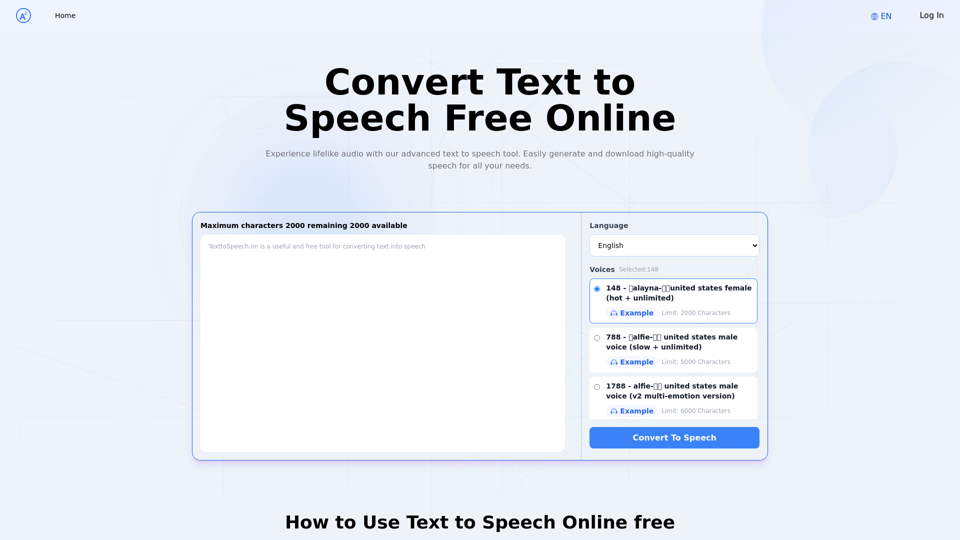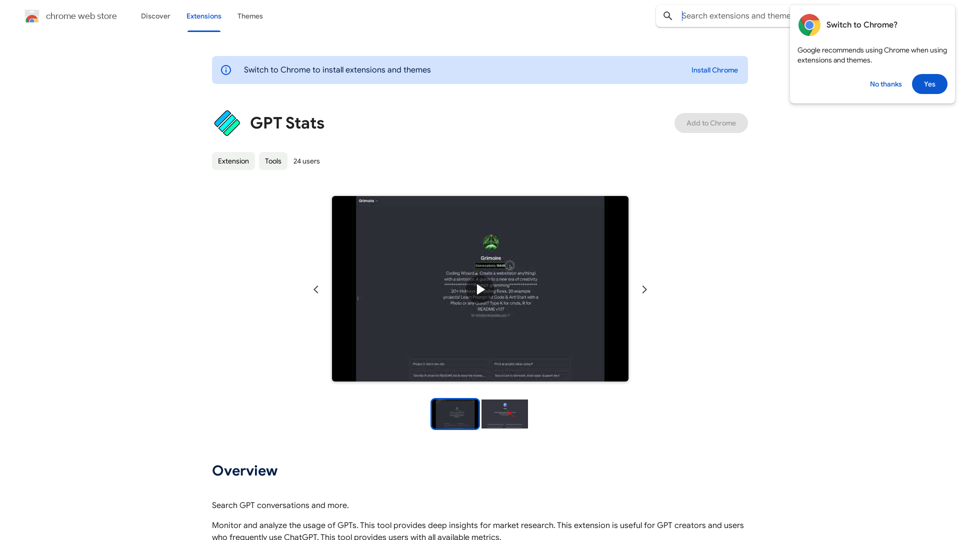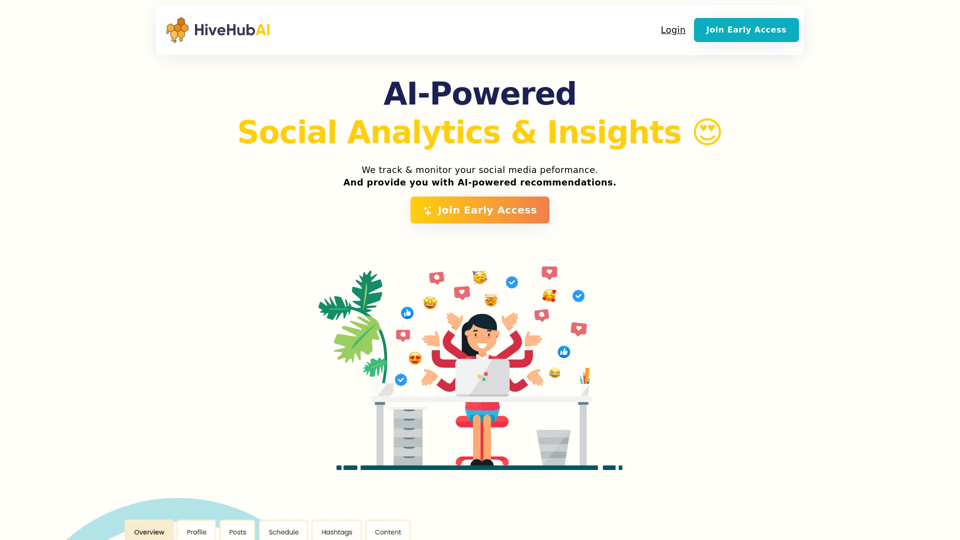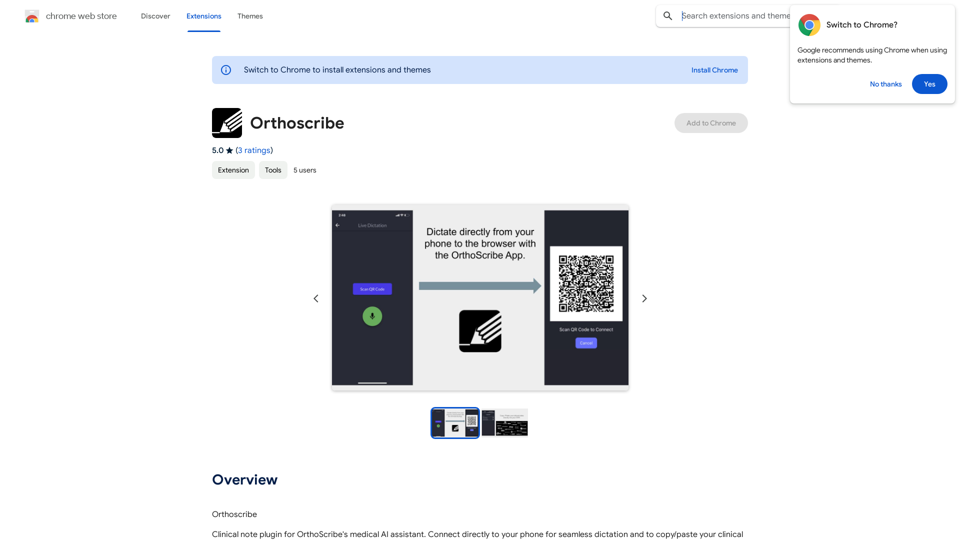ZhiNang.ai is a free, intelligent, and user-friendly AI tool based on ChatGPT. It offers users access to various "brain tanks" for conversations, allows creation and sharing of custom "brain tanks," and facilitates the sharing of interesting and useful dialogues within the community.
ZhiNang.ai - AI assistant from anypage
ChatGPT is available everywhere, anytime, on any webpage.

Introduction
Feature
AI-Powered "Brain Tanks"
ZhiNang.ai introduces the concept of "brain tanks" - AI-powered robots with built-in knowledge and skills. These brain tanks can:
- Quickly answer specific questions
- Complete specific tasks
- Guide users through certain processes
Free ChatGPT Integration
- No API key or payment required
- Accessible through website or browser plugin
- Conversations consume $GPTCoin (in-app credit)
$GPTCoin System
- Each conversation costs one $GPTCoin
- Free acquisition methods:
- Registration
- Inviting others
- Daily login
- Option to purchase $GPTCoin directly
Website Features
-
Dialogue Interface:
- Start conversations with various think tanks
- Quick switching between think tanks
-
Think Tank Browse:
- Access to built-in system think tanks
- Community-created think tanks
- Popular think tanks
-
User-Created Think Tanks:
- Create personal think tanks
- Option to share with others
-
Community Square:
- Share interesting conversations
- Browse community-shared dialogues
Browser Plugin Functionality
- Summon AI assistance anywhere online
- Text selection triggers relevant think tanks
- Direct continuation in any input box
- Search engine integration (Google/Bing/Baidu)
- Easy dialogue sharing
Community Building
- Incentive mechanism for early users
- Potential future profit opportunities
FAQ
What is ZhiNang.ai?
ZhiNang.ai is a free AI tool based on ChatGPT that offers various "brain tanks" for conversations, allows users to create and share their own "brain tanks," and facilitates sharing of interesting dialogues within the community.
What is a "brain tank"?
A "brain tank" in ZhiNang.ai is an AI robot with built-in knowledge and skills, capable of answering specific questions, completing tasks, and guiding users through certain processes.
How do I use ZhiNang.ai?
You can visit https://zhinang.ai on a PC or mobile device to start dialogues with various think tanks and quickly switch between them as needed.
How do I get $GPTCoin?
You can acquire $GPTCoin for free through registration, inviting others, and daily logins. Alternatively, you can purchase $GPTCoin directly through the platform.
Can I create my own think tanks?
Yes, ZhiNang.ai allows users to create their own think tanks for personal use or to share with others in the community.
Latest Traffic Insights
Monthly Visits
193.90 M
Bounce Rate
56.27%
Pages Per Visit
2.71
Time on Site(s)
115.91
Global Rank
-
Country Rank
-
Recent Visits
Traffic Sources
- Social Media:0.48%
- Paid Referrals:0.55%
- Email:0.15%
- Referrals:12.81%
- Search Engines:16.21%
- Direct:69.81%
Related Websites

Text to Speech.im: Convert Text to Speech for Free Online
Text to Speech.im: Convert Text to Speech for Free OnlineConvert text to speech effortlessly using our AI text to speech online free tool. Enjoy natural-sounding text to speech voices and seamless text to speech download for high-quality audio. Perfect for creating engaging content with our text to speech generator.
12.76 K

PI Prompts for ChatGPT, Gemini, Claude, Mistral, Groq & PI General Instructions: * Be specific: Clearly state what you want the AI to do. * Provide context: Give the AI enough information to understand your request. * Experiment: Try different prompts and see what works best. Creative Writing: * ChatGPT: Write a short story about a robot who learns to feel emotions. * Gemini: Compose a poem in the style of Emily Dickinson about the nature of time. * Claude: Create a fictional news article about a discovery on Mars. * Mistral: Generate a song lyric about the feeling of falling in love. * Groq: Write a screenplay for a 5-minute film about a lost dog finding its way home. * PI: Design a worldbuilding document for a fantasy novel, including its history, geography, and magic system. Informative Tasks: * ChatGPT: Summarize the main points of the article on climate change. * Gemini: Explain the concept of quantum mechanics in simple terms. * Claude: Compare and contrast the philosophies of Socrates and Plato. * Mistral: Create a list of 10 interesting facts about the human brain. * Groq: Write a code snippet to scrape data from a website. * PI: Generate a research proposal on the impact of social media on mental health. Code Generation: * ChatGPT: Write a Python function to calculate the factorial of a number. * Gemini: Generate HTML code for a simple webpage with a heading and a paragraph. * Claude: Create a SQL query to retrieve all customers from a database. * Mistral: Write a JavaScript function to validate an email address. * Groq: Generate code to create a new user account in a web application. * PI: Design a machine learning model to classify images of cats and dogs.
PI Prompts for ChatGPT, Gemini, Claude, Mistral, Groq & PI General Instructions: * Be specific: Clearly state what you want the AI to do. * Provide context: Give the AI enough information to understand your request. * Experiment: Try different prompts and see what works best. Creative Writing: * ChatGPT: Write a short story about a robot who learns to feel emotions. * Gemini: Compose a poem in the style of Emily Dickinson about the nature of time. * Claude: Create a fictional news article about a discovery on Mars. * Mistral: Generate a song lyric about the feeling of falling in love. * Groq: Write a screenplay for a 5-minute film about a lost dog finding its way home. * PI: Design a worldbuilding document for a fantasy novel, including its history, geography, and magic system. Informative Tasks: * ChatGPT: Summarize the main points of the article on climate change. * Gemini: Explain the concept of quantum mechanics in simple terms. * Claude: Compare and contrast the philosophies of Socrates and Plato. * Mistral: Create a list of 10 interesting facts about the human brain. * Groq: Write a code snippet to scrape data from a website. * PI: Generate a research proposal on the impact of social media on mental health. Code Generation: * ChatGPT: Write a Python function to calculate the factorial of a number. * Gemini: Generate HTML code for a simple webpage with a heading and a paragraph. * Claude: Create a SQL query to retrieve all customers from a database. * Mistral: Write a JavaScript function to validate an email address. * Groq: Generate code to create a new user account in a web application. * PI: Design a machine learning model to classify images of cats and dogs.An intuitive right-hand side panel for ChatGPT, Google Gemini, Claude.ai, Mistral, Groq, and Pi.ai. Reach your prompt library with a...
193.90 M

Automatically and quickly remove image backgrounds, making image backgrounds transparent or changing the backgrounds.
193.90 M

Effortlessly apply to jobs with a single click. Canyon automatically fills out job applications and creates resumes for you.
193.90 M

GPT Stats * Parameters: 175 Billion * Trainers: * Dataset: Massive dataset of text and code * Method: Supervised fine-tuning * Capabilities: * Text Generation * Text Summarization * Language Translation * Code Generation * Question Answering * Dialogue Generation * Limitations: * Can sometimes generate incorrect or biased information * Lacks real-world knowledge and common sense * Can be fooled by adversarial examples
GPT Stats * Parameters: 175 Billion * Trainers: * Dataset: Massive dataset of text and code * Method: Supervised fine-tuning * Capabilities: * Text Generation * Text Summarization * Language Translation * Code Generation * Question Answering * Dialogue Generation * Limitations: * Can sometimes generate incorrect or biased information * Lacks real-world knowledge and common sense * Can be fooled by adversarial examplesSearch for conversations with GPT and other content.
193.90 M


